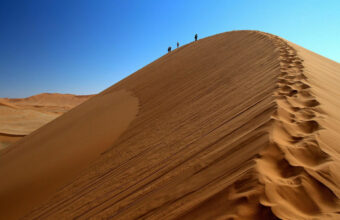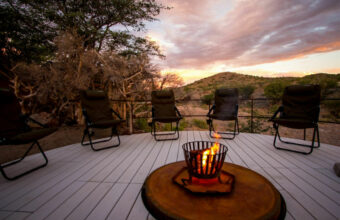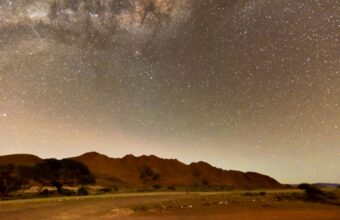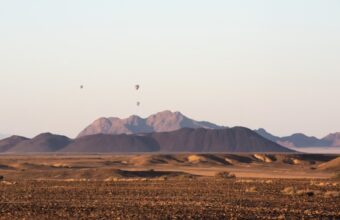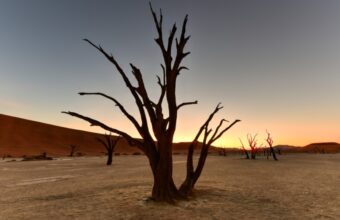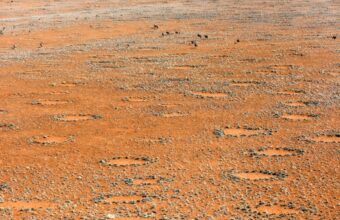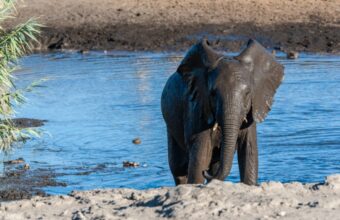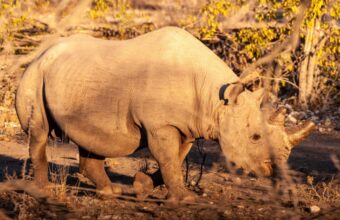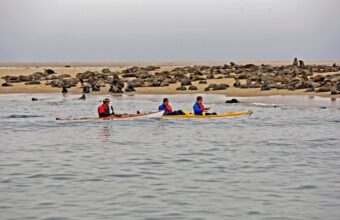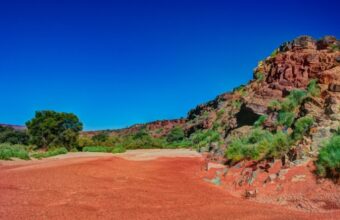Safari in Namibia
An expert guide to the best safaris in Namibia
Researching travel guides, reviewing campsites and finding new ways to photograph its sublime scenery, I've been going on safari in Namibia for over a decade and have visited virtually every corner of this vast and little-known country.
Namibia shares borders with some of Southern Africa’s safari heavyweights: South Africa, Botswana and Zambia. But the Namibia safari experience has little in common with its neighbours. Yes, there are all the “big five” and other blockbuster megafauna, but all in much lower densities. There are few open savannahs and vast river deltas. Here, the desert reigns supreme. Namibia is Sub Saharan Africa’s driest country, where the elephants have evolved into their own subspecies to adapt to the scarcity of water. Going on safari in Namibia is more about marvelling at the staggering desert scenery and the weird micro-scale wildlife that can withstand this extreme environment.
You can go on safari in South Africa or Kenya to chase the big five. You go on safari in Namibia to see something that is truly, often startlingly, different.
If there's one place that's truly about the journey, not the destination, it is Namibia. Read on for my expert guide to the best safaris in Namibia.
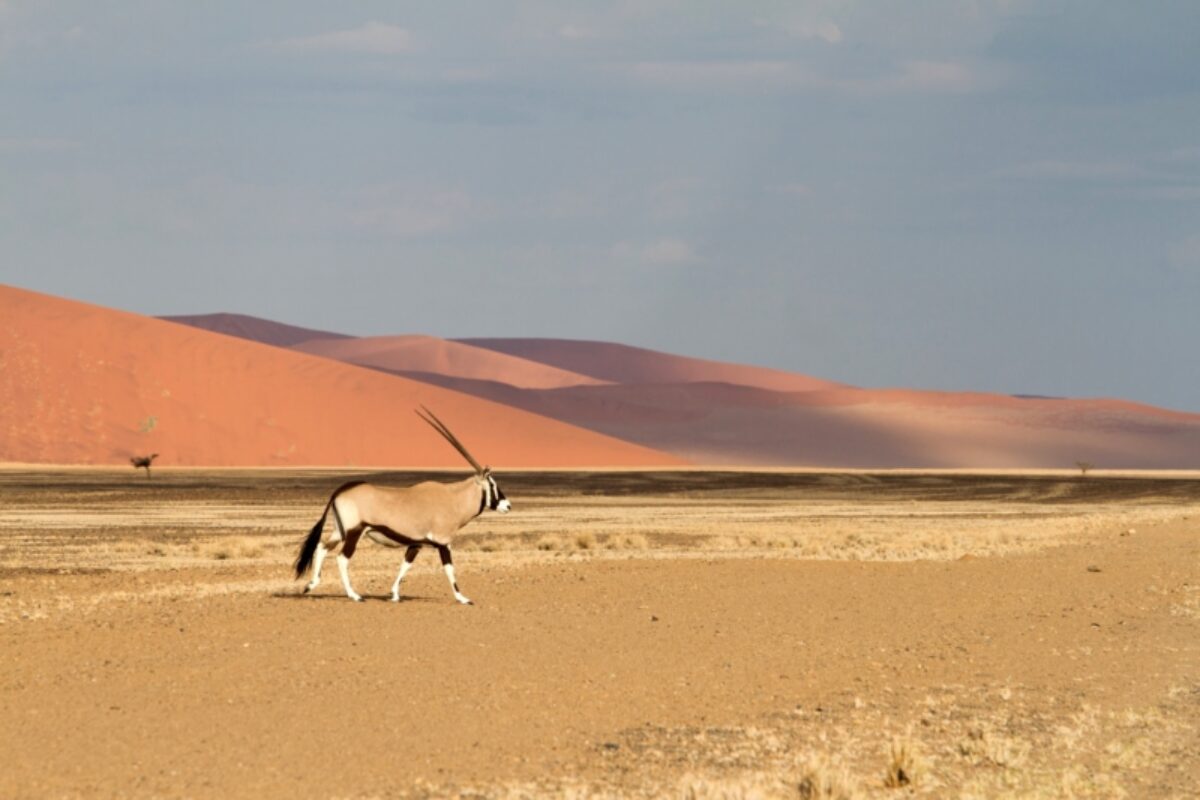
A lone oryx in the vastness of the Sossusvlei clay pans, Namibia
Where to go on safari in Namibia
Namibia's most popular – and some lesser-known – highlights
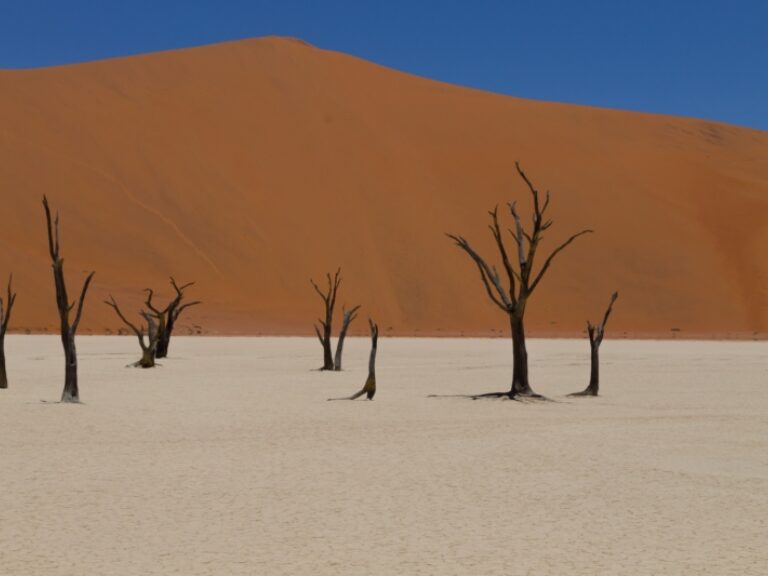
Namib-Naukluft National Park
Hike landscapes straight from a surrealist painting
Probably my favourite places in all Namibia are the pale clay pans of Sossusvlei and Deadvlei. Set in the sprawling Namib-Naukluft National Park, this is one of Earth's oldest and most captivating deserts.
The odd oryx, springbok antelope and ostrich dot the scrubland but don't expect any big five sightings here, this place is more about unshowy wildlife and its visually arresting landscapes. (For game sightings I’d recommend Namibrand or Etosha instead.) Here you'll find a surreal playground of towering dunes in ombre spice-coloured shades, from paprika to turmeric to cinnamon and hauntingly beautiful fossil valleys.
As you venture deeper into the park, you can get out of the vehicle and touch the sands. Come at dawn, and you'll feel the mist from the Atlantic Ocean settling on your arm as you climb the dunes, before it dries out in the warming morning sun.
There are no adventure activities like sand boarding on offer here, it's about climbing the sand dunes (in designated areas), ambling across the pans, and stopping for a picnic to soak up the scenery.
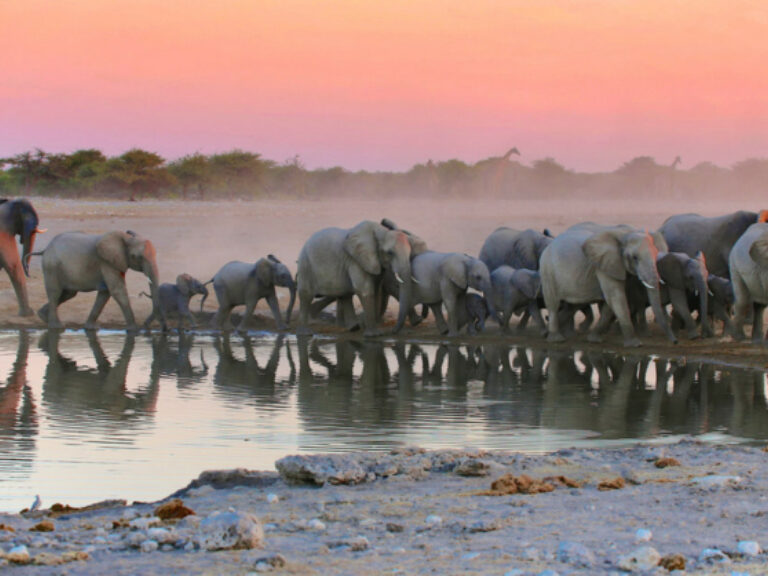
Etosha National Park
Namibia’s most famous safari park
Its name means 'the empty place' but with Namibia's highest concentration of wildlife, Etosha is anything but empty of safari sightings – the only big five animal not found here is the Cape buffalo.
Etosha National Park is well-known for its waterholes, best visited during the dry season when wildlife flocks to these oases dotted throughout the park. In Etosha I have spotted lions chasing springbok, dozens of bird species (including many pairs of elegant blue cranes), imposing white-crusted elephants, oryx herds, giraffes, and much more. But the real safari treat is to sit still. Pack a picnic and spend some time at the waterhole to appreciate the astounding diversity and density of the game.
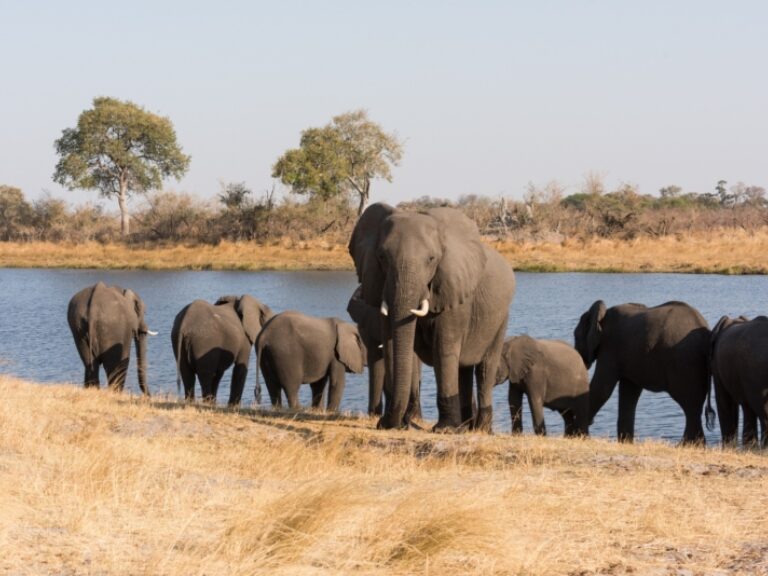
Bwabwata National Park
Namibia’s safari hidden gem
Escape the mainstream safari itineraries at Bwabwata National Park. Often overlooked in favour of Namibia’s more famous safari parks, I like to think of this area as a more affordable Okavango Delta.
With lush landscapes and riverine forests, the wetlands of the Zambezi Region (formerly known as the Caprivi Strip) in northernmost Namibia offer a striking comparison to the stark coastline and desert interior. It's part of the Kavango-Zambezi Transfrontier Conservation Area, covering an area of 444,000 square kilometres. Bwabwata National Park sits at the heart of this region and is home to hippos, crocodiles, roan, sable, impala and red lechwe, and lions and leopards. The Buffalo Core Area is notable for its buffalo herds in the east. The Kwando Core Area to the west is primarily known for its elephants and sometimes African wild dogs pass through.
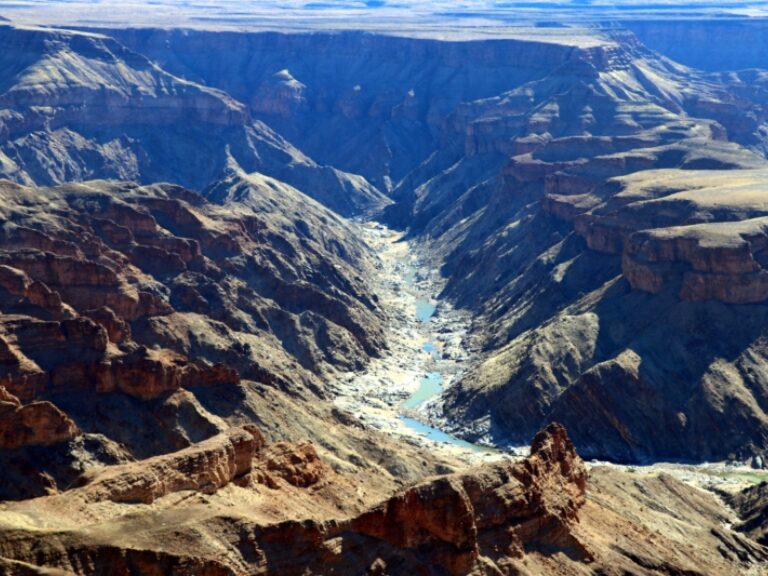
ǀAi-ǀAis/Richtersveld Transfrontier Park
Trek the iconic Fish River Canyon
Namibia's Fish River Canyon is a staggering geological masterpiece in the /Ai-/Ais Richtersveld Transfrontier Park, shared by Namibia and South Africa.
The main viewpoint and information centre are worth a visit for an epic sunset if it's on your route, but to truly escape the tourists, your best bet is to embark on the epic five-day trek along the canyon floor. Sights in this area include quiver trees and cute klipspringer antelopes. It's a straightforward trek as you can’t leave the canyon walls, but you’ll be totally self-sufficient and it’s not to be underestimated – I had a friend who had to be helicoptered out due to heat exhaustion and dehydration. An organised trek accompanied with a guide is recommended, if not essential.
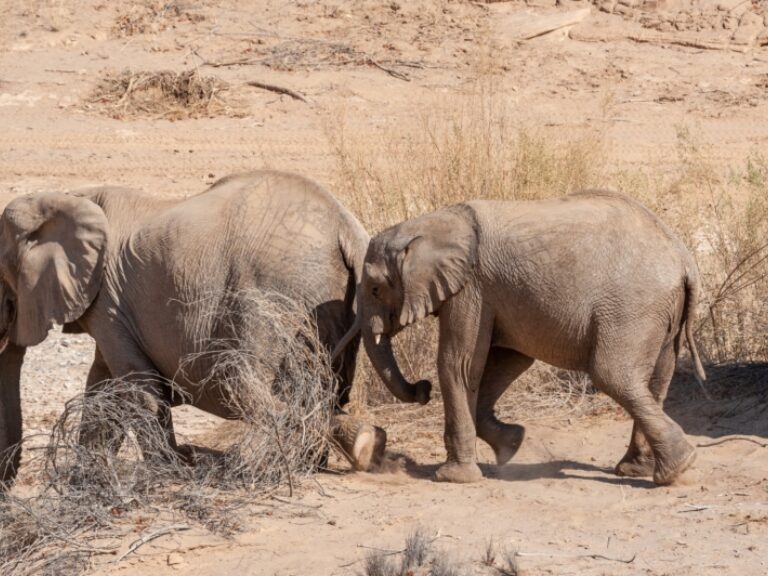
Damaraland
See Namibia’s rare desert dwelling elephants
You might only see a few animals here, but tracking Damaraland's desert-dwelling wildlife is a highlight in this fascinating region sandwiched between Etosha National Park and the Skeleton Coast.
Desert-adapted elephants, rhinos, and lions roam rocky terrains, dry riverbeds, and gravel plains dotted with the weird, twisted welwitschia mirabilis plants.
Although it can be challenging to see the wildlife here, I find this scarcity makes each sighting all the more memorable. Spotting one elephant in the desert is somehow more special than seeing an entire herd in a lush reserve.
Desert-dwelling elephants are considered an endangered subspecies and occur in five rivers usually devoid of water: the Ugab, Huab, Uniab, Hoanib and Hoarisib. These elephants have larger feet to walk on sand and travel in smaller herds. They only need to drink once every few days, using their long trunks to dig for water in the dry river beds.
Also here is Twyfelfontein, home to one of Africa's most significant collections of rock art, with over 2,500 engravings dating back some 6,000 years.
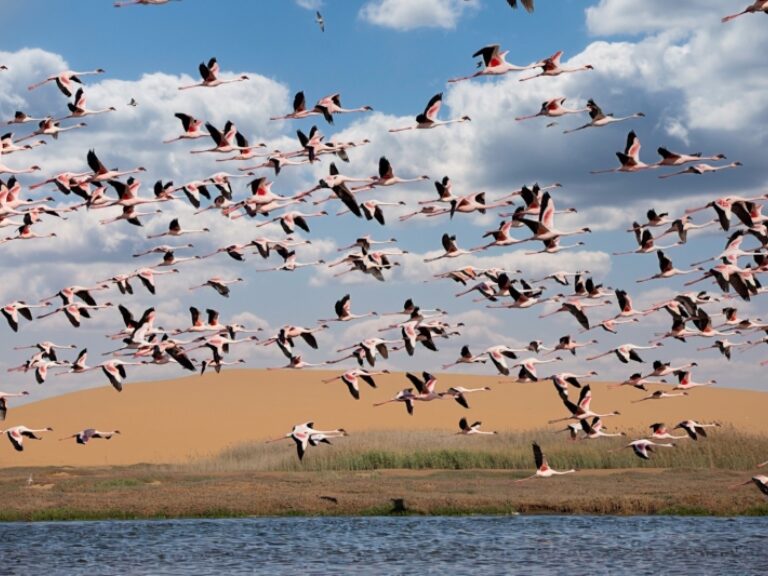
Walvis Bay
Birding on the Atlantic Coast
Although more industrial, these coastal towns harbour great wildlife opportunities coupled with creature comforts (don’t miss oysters and cold Namibian beers from the seaside restaurants in Swakopmund).
The expansive tidal lagoon south of Walvis Bay is primarily a birding attraction, hosting thousands of flamingos, pelicans and cormorants. Boat tours along the coast also provide a front-row seat to colonies of seals, and sometimes dolphins cruise the bow waves.
Inland, you can walk the coastal dunes searching for desert critters, such as the comical palmato gecko with its transparent skin, beautiful colours, and sand-disguised sidewinding snakes.
Namibia’s safari highlights
Our expert's top picks
-
NamibRand Nature Reserve
-
Namib-Naukluft National Park
-
Namib-Naukluft National Park
-
Bwabwata National Park
-
Namib-Naukluft National Park
-
Etosha National Park
-
Damaraland
-
Namib-Naukluft National Park
-
Walvis Bay
-
Gondwana Namib Park
Namibia safaris: Need to know
Everything you wish you'd known before you booked
When to go on safari in Namibia
Namibia has diverse landscapes that shine at different times of the year. Typically, the best time for wildlife viewing is the dry season (May to October), while the wet season (November to April) transforms the desert into a blooming wonderland ideal for photographers and birdwatchers.
How it works
You can of course book an organised tour of Namibia with any number of safari operators. The standard itineraries typically include Etosha, the Sossusvlei claypans, Swakopmund and the Fish River Canyon. There are a few advantages of booking an organised tour, not least convenience and the extra reassurance of help and support while you navigate an unfamiliar country.
That said I’d encourage more independently-minded visitors to consider a self-drive trip. This way you can get well off the standardised itineraries and spend as long as you like in some of Namibia’s hidden gems mentioned in this guide. You can rent a 4X4 in Windhoek or Walvis Bay, and book your own accommodation directly. Hotels and lodges generally offer their own guided excursions and tours (for an additional fee.) But don't rush: fight the urge to cram too many sights into a short trip, or your trip will be exhausting. And be prepared for the challenge of driving. The distances between the various safari areas and national parks are huge, but the roads are often decent gravel. Plan a buffer day into your itinerary in case something goes wrong with the vehicle and ensure you have sufficient fuel. Some routes are 300 to 400 kilometres without gas stations. In my experience, most rental companies have great insight, so ask away! They will know the best routes and ask if they offer satellite phone rental or emergency assistance.

